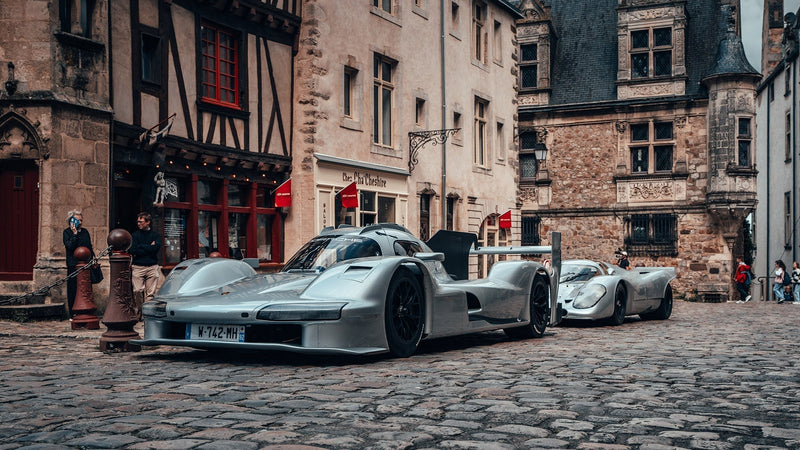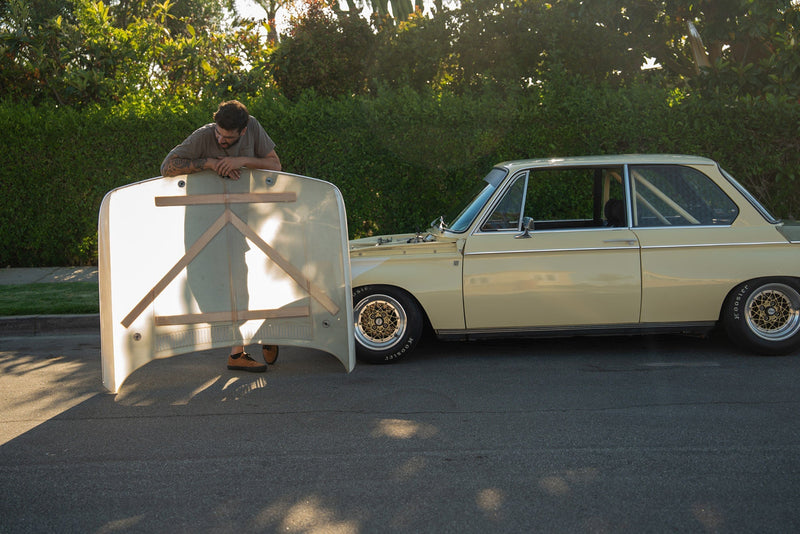In other words, a well-off enthusiast could still buy a brand-new supercar in 1973, but all of the high-volume manufacturers were putting their eggs in the efficiency basket as the common man's appetite for horsepower was all but swallowed up by the economics of the day.




And for good reason. Driving even a remotely fast car meant waiting in long lines to fill it up with expensive fuel that it burned quickly, and new legislation only worsened the equation. Energy-usage quotas were implemented almost everywhere, and personal transportation was one of their consistent targets. In the United States for instance, Nixon imposed a 55mph national speed limit, while in Germany Willy Brandt simply nixxed the use of personal automobiles on Sundays altogether. On top of this, another Oil Crisis significant enough to earn its capital letters came about in 1979. But in between these performance-car-killing supply shocks, a BMW-loving Bavarian could have still filled a garage with the pair pictured here.
Clearly, the dour pragmatism of the era was not absolute if it still left some room for bright orange BMWs with six cylinders and the existence of Alpina in general. So how bad could it have been?



I can't say. I wasn't even the tiniest ocular twinkle when these cars were new. Like all youngish people interested in oldish stuff, my perception of a past that I never lived in relies on secondhand accounts and surviving artifacts. But, you could argue that the closest thing to a time machine is a well-preserved machine from a different time, and thanks to some very good friends I had the chance to spend a day with two period-correct examples to live out a memory of Bavarian motoring in the 1970s.
The test drives took place in the place where these cars came from, they were supplied by the companies that built them the first time around, and out here in the southern German countryside every building and route seems to be hundreds of years old. Getting any closer to 1976 would be a big ask.
Ben Voss at BMW Classic kindly provided the first-generation 5-Series in the form of this first-facelift 525 in the super-'70s shade of Inka Orange. He then went a step further and introduced me to Alpina's head of archives, Timo Gerlitz, who gave me an excuse to take a little road trip from Munich to Buchloe to sample the company's A4/3 that was recently restored in-house. Getting any closer to a perfect day would be a big ask.




Alpina's car was so new that I felt guilty wearing my shoes in it, while the four-door BMW was more of a survivor with the right amount of visible age to make it honest at five feet and gorgeous at twenty. Both of these were easy to love, and the pair complemented itself perfectly both in terms of their character and condition.
The E12 presents as the quintessential Bimmer sedan—a sensible choice for commuting with enough ticket-earning potential to also take on the role of weekend car—while the BMW Alpina 320i A4/S is an example of what happens when race-prep experience is successfully distilled into a street car. Both are worthy ambassadors of Bavaria during a period when it was tough to sell anything worth getting excited about.



On the way to Alpina's headquarters in Buchloe (which is, as you'd hope, color-coordinated in Alpina's signature blue and green throughout), the E12 felt out of place in traffic in all the right ways. Today's Autobahn is basically a greyscale collection of cars that were born from computer-crunched consumer data and shaped by computational fluid dynamics: They make a lot of sense but they aren't a lot of fun. There have always been left-lane rockets (and there are more options now than ever), but the E12 proves that the everyday fare wasn't always as boring as it's become. This cheerful 5er is the antidote to silver Golfs.
It's brighter than a German engineer, it isn't made out of indistinct blobs of bodywork, and if you want to chuck it around it happily complies instead of scolding you with a dashboard light show indicating which safety systems are currently keeping you from entering a ditch or something resembling a good time. This is no M5, but it's still a straight-six BMW that once topped its model range, so it still squirts around. I didn't expect a head-meets-headrest level of acceleration, but I didn't expect it to get so close to that point.
Skinny all-season tires coupled with the all-OEM suspension equaled huge angles of body roll on the winding country lanes, and while boat-like behavior isn't necessarily desirable in a car that you intend to drive fast, the context matters more than the effect here. Sliding around on the barely-bolstered corduroy as you try to achieve the kind of lean that appears in the photographs of old road tests is far more enjoyable than giving up all that drama in the name of cornering flat. Besides, this was never a sports car. And neither was its little brother, the first 3-Series.









As should be made clear by the pictures of the decals (inspired by/directly borrowed from the Fischer C4 ski livery), wheels, chin spoiler, striped Scheels, and highly-tuned Kugelfischer ("K-fish," for kids cooler than me), fuel-injection setup, Alpina's version of the humble E21 3-Series had a decidedly different purpose to fulfill than the car it was based on. Before Alpina became a bonafide manufacturer in 1983, and before any of the Bx/Cx/Dx model-naming came about, this was the kind of car you could buy in Buchloe if the versions in Munich weren't enough. You'll notice it still has the 320i badge on the butt, which is a neat little piece of stealthiness considering the engine was a major evolution of the two-liter inline-four M10 in BMW's 320i.
For these early Alpina E21s, the company more or less ported over the drivetrain packages from their previous work with 2002s before they added tuned versions of the M20 straight-six for the next-generation "C-series" E21s. Of the first Alpina E21s, you could spec one with the carbureted A1/3 unit (the "/3" signifying the 3-Series application as opposed to 2002), the carbureted A2/3, the "K-fish" A4/3, or the truly exotic motorsport-oriented A4S/3. This example is an A4/3, which means it made about 160bhp and 150ft-lbs of torque when new (which, it kind of is again). Specs and codenames only go so far in translating the experience of putting them to work though, so enough of that.





The driving personality of this car is the kind that's hard to predict but obvious in hindsight. It drives like it looks. The original 3-Series identity is still largely there sub-surface, but every facet of it has been exaggerated for the better. Like a standard E21, the horizon will tilt in a hard corner, but where this car separates itself is how much faster you can sway it back and forth. If the standard car is a wrecking ball with a big sweep, the Alpina is a desktop-sized Newton's cradle—same side-to-side swing, just to very different degrees. Pitching it into a turn, the first bite leaves something to be desired if you're spoiled by modern coilovers, but that disappointment is soon followed up by a mid-corner ability to maintain or even decrease the radius that makes up for the initial softness. It becomes better for it actually, or at least more fun.
Driving spiritedly in a place without many straight lines or stop signs, you can get it into a satisfying left-right rhythm that feels like primo snowboarding: you toss the weight to the outside wheels before adjusting and honing in on the apex, trying to synch the changes in the body's pitch with the layout of the road. It's comfortable but not lulling, it makes you work to get the most of it but you won't be punished for getting a little sloppy either. All the while, the exhaust is going off like popcorn and you're snuggled in an interior trimmed in the coolest fabric this side of pasha.
BMW andAlpina have come a long way since 1976, that should go without saying. But this pair is a testament to the fact that they knew how to get their jobs done just as well back then, if not better.
Thanks again to Ben and Timo for providing the cars to make this time-travel tourism possible!
























































